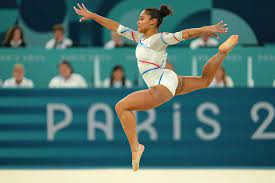What are the different levels in gymnastics for kids?
Gymnastics for kids is structured in progressive levels, each building upon foundational skills with a focus on strength, flexibility, coordination, and confidence. Whether your child is just starting or dreaming of competitions, understanding the different levels helps parents make informed choices and set realistic expectations.
In Australia, recreational gymnastics programs typically follow a tiered structure starting with introductory classes and moving through various stages of skill development. These levels ensure kids are challenged appropriately and stay motivated through visible progress markers.
How does gymnastics for kids progress through levels?
Gymnastics programs are usually split into three main categories:
- Introductory/Foundation Levels – Focus on basic movements, body control and safety.
- Developmental/Intermediate Levels – Introduce more complex skills and routines.
- Competitive/Advanced Levels – Prepare gymnasts for competitions and higher-level performance.
Let’s break them down further.
What happens in the foundation stages of kids’ gymnastics?
These entry levels are often where kids aged 3 to 7 begin their journey. Classes are designed to be fun, safe, and interactive while teaching essential skills.
Typical milestones include:
- Learning to roll, balance, swing, and jump
- Mastering basic gym shapes (tuck, pike, straddle)
- Developing listening skills and following instructions
- Building trust in coaches and confidence in movement
These early years are crucial, as they lay the groundwork for physical literacy. Many clubs refer to these as Kindergym or Junior Gym programs.
When do kids start learning real gymnastics skills?
Once the basics are established, kids move into developmental levels, usually from ages 6 and up. Here, the training becomes more structured. They begin to learn:
- Cartwheels, handstands, bridges and splits
- Strength-building techniques (like chin-ups and core drills)
- Entry-level bar, beam, and floor routines
- Safe landing techniques and injury prevention
This stage often uses achievement programs like Gymnastics Australia’s LaunchPad or Badge Level programs, where kids earn coloured badges as they master specific skills. These systems tap into the principle of Consistency, giving children clear steps to follow and celebrate.
How do competitive levels work in gymnastics for kids?
Children showing a higher level of aptitude, discipline and interest may be invited into competitive streams by age 7 or 8. Training hours increase, and the focus shifts to perfecting routines for judges.
Competitive gymnastics for kids in Australia usually follows Australian Levels Program (ALP), which includes:
- Levels 1–3: Entry-level competition, focused on skill execution rather than difficulty
- Levels 4–6: Intermediate competition with higher expectations on form and precision
- Levels 7–10: Advanced competition with increased difficulty and choreography
Some gymnasts continue into elite or international pathways, but the majority participate recreationally or locally.
Is your child ready to move up a level?
Progression isn’t just about nailing a skill – it’s also about maturity, consistency, and attitude. Coaches typically assess children across several criteria:
- Mastery of required skills
- Willingness to take feedback and try again
- Emotional readiness to handle pressure or structured settings
- Consistent attendance and effort
One way to encourage readiness is to highlight social proof – showing kids how others at their level have progressed and celebrated milestones. This simple peer motivation can spark renewed focus.
What if my child doesn’t want to compete?
That’s perfectly normal – and healthy. Gymnastics for kids isn’t just a competition pipeline. Many clubs offer recreational or display teams that focus on fun, fitness, and performance without the stress of competition. These options are ideal for:
- Building lifelong physical literacy
- Supporting mental health through movement
- Encouraging teamwork and creativity
Choosing a non-competitive stream doesn’t mean a child won’t be challenged. In fact, these environments often allow kids to thrive at their own pace.
How often should kids train at each level?
Training frequency increases gradually as children move up. Here’s a general guide:
| Level | Age Range | Weekly Sessions | Focus |
|---|---|---|---|
| Foundation (e.g. KinderGym) | 3–5 years | 1 session | Movement basics, fun |
| Beginner Development | 5–7 years | 1–2 sessions | Gym shapes, balance, entry skills |
| Intermediate Levels | 6–10 years | 2–3 sessions | Cartwheels, bridges, routine prep |
| Competitive Levels 1–3 | 7–9 years | 3–4 sessions | Routine precision, conditioning |
| Competitive Levels 4+ | 10+ years | 4–6 sessions | High performance, strength training |
It’s important not to rush the process. Overtraining can lead to burnout or injury. The goal is sustainable growth.
Can kids switch levels or streams later?
Yes – movement between recreational and competitive streams happens all the time. Some kids return to recreational programs after a stint in competitions. Others grow into higher levels later than their peers. There’s no “one track” in gymnastics for kids.
Instructors usually work with families to decide what’s best based on the child’s growth, enjoyment, and commitment.
FAQs
What is the best age to start gymnastics for kids?
Most kids start between 3 and 5 years old, but it’s never too late to begin. Foundation programs are designed for all skill levels, even complete beginners.
Does gymnastics help with school readiness?
Yes. Gymnastics supports concentration, discipline, and following instructions – all of which benefit classroom learning.
What’s the difference between recreational and competitive gymnastics?
Recreational gymnastics focuses on learning and fun, while competitive programs involve judging, structured routines, and higher time commitments.
Conclusion
Understanding the structure of gymnastics for kids helps parents and carers choose the right path – whether your child loves cartwheeling across the living room or dreams of medals. Every level, from the first forward roll to advanced routines, plays a valuable role in their development.
For families comparing options for beginner-friendly gymnastics programs, you can explore more about kids’ recreational classes at your local centre.
To see how gymnastics helps develop confidence and focus, check out this article from Raising Children Network – a trusted resource for Australian families.

